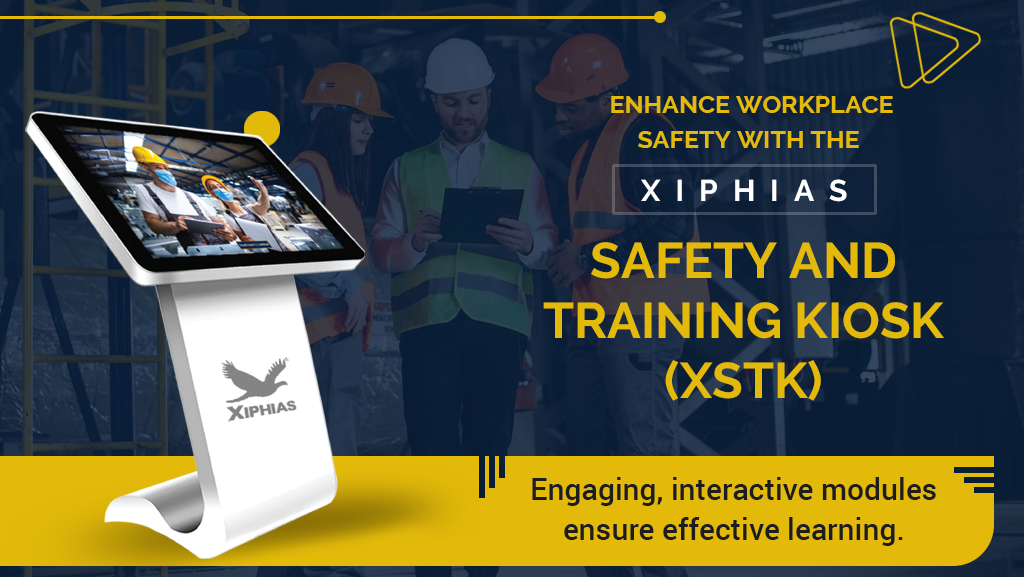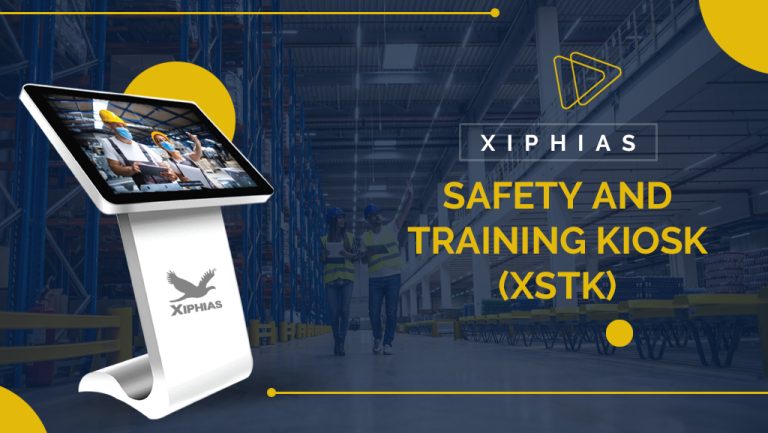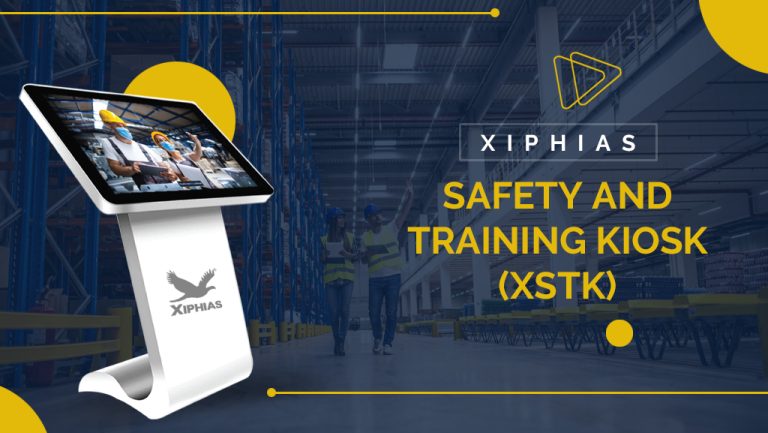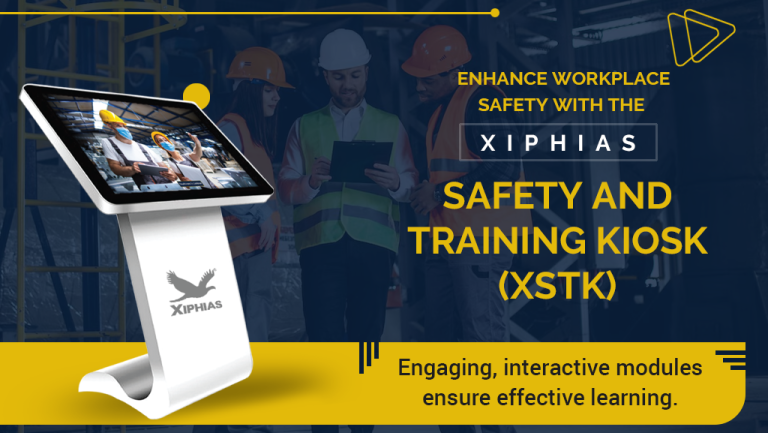Safety Training Kiosks: Revolutionizing the Heavy Equipment Industry
The heavy equipment industry is the backbone of sectors like construction, mining, and logistics. However, working with heavy machinery poses inherent risks. Accidents, often caused by insufficient training, can lead to injuries, fatalities, and significant financial losses. In this high-stakes environment, safety training kiosks have emerged as game-changers, offering interactive, efficient, and scalable solutions for improving workplace safety.
What Are Safety Training Kiosks?
Safety training kiosks are self-contained, digital systems that provide workers with interactive training programs. These kiosks are equipped with touchscreens, multimedia capabilities, and software designed to simulate real-world scenarios.
In the heavy equipment industry, these kiosks focus on educating workers about:
-Operating heavy machinery safely.
-Handling emergencies effectively.
-Maintaining equipment for optimal performance.
-Adhering to workplace safety regulations.
The Importance of Safety Training in the Heavy Equipment Industry
The heavy equipment industry faces unique challenges when it comes to workplace safety. Accidents often occur due to:
-Lack of knowledge about operating complex machinery.
-Failure to follow safety protocols.
-Fatigue and human error.
Comprehensive safety training is not just a legal requirement but also a moral obligation for employers. Effective training can significantly reduce workplace incidents, boost employee morale, and ensure compliance with regulatory standards.
Why Traditional Training Methods Fall Short
Traditional safety training methods, such as classroom lectures and printed manuals, have limitations:
Lack of Engagement: Static content fails to capture workers’ attention.
Limited Customization: One-size-fits-all approaches do not address individual skill levels.
Time-Consuming: Classroom sessions disrupt workflows and reduce productivity.
Difficulty in Retention: Workers often struggle to retain information presented in a passive format.
Advantages of Safety Training Kiosks
Safety training kiosks address these limitations with a host of advantages tailored to the needs of the heavy equipment industry.
1. Interactive and Engaging Learning
Kiosks leverage multimedia elements like videos, animations, and quizzes to make training more engaging. This interactive approach enhances knowledge retention and ensures workers are better prepared for real-world scenarios.
2. On-Demand Access
Workers can access training modules anytime, reducing the need for scheduled sessions. This flexibility minimizes disruptions to operations while ensuring consistent learning opportunities.
3. Customizable Content
Safety training kiosks can be tailored to specific job roles, machinery types, and workplace environments. This customization ensures workers receive relevant and targeted training.
4. Real-Time Assessments
Kiosks include quizzes and simulations to test workers’ understanding in real-time. Immediate feedback helps identify areas for improvement, ensuring a thorough grasp of safety protocols.
5. Cost-Effective Training Solution
While the initial investment in kiosks may be significant, they eliminate recurring expenses like hiring trainers or printing materials. Over time, they prove to be a cost-effective solution for comprehensive training.
6. Scalable Across Locations
For companies operating in multiple locations, safety training kiosks provide a standardized training experience. Workers across all sites can receive consistent safety instructions, ensuring uniform compliance.
7. Data Tracking and Reporting
Modern kiosks come with built-in analytics capabilities. Managers can track training progress, identify gaps, and generate compliance reports, streamlining audits and inspections.
Key Features of Safety Training Kiosks
When choosing a safety training kiosk for the heavy equipment industry, it is essential to consider the following features:
Rugged Design: Built to withstand harsh industrial environments.
Multilingual Support: Ensures accessibility for a diverse workforce.
Touchscreen Functionality: Simplifies navigation and enhances user experience.
Integration with Existing Systems: Syncs with HR or compliance software for streamlined operations.
Customizable Modules: Allows businesses to tailor training programs to their specific needs.
VR and AR Capabilities: Enables immersive learning experiences for complex machinery training. Applications in the Heavy Equipment Industry
Safety training kiosks have a wide range of applications in the heavy equipment sector:
Construction Sites:
Training workers on the safe use of cranes, bulldozers, and excavators.
Mining Operations:
Educating employees on handling hazardous materials and operating drills safely.
Logistics Hubs:
Teaching proper procedures for loading and unloading heavy cargo.
Manufacturing Plants:
Guiding workers on maintaining and repairing heavy machinery.
Enhancing Compliance and Reducing Risks
Governments and industry bodies mandate stringent safety standards for heavy equipment operations. Non-compliance can lead to severe penalties and reputational damage. Safety training kiosks simplify compliance by:
-Ensuring workers are well-informed about regulatory requirements.
-Generating detailed training records for audits.
-Reducing the risk of accidents, thereby lowering liability.
Future Trends in Safety Training Kiosks
The safety training kiosk market is continuously evolving to meet industry demands. Emerging trends include:
Artificial Intelligence (AI):
AI-powered kiosks can adapt training content based on individual performance.
Augmented Reality (AR):
AR enhances training by overlaying virtual instructions on real-world machinery.
Cloud-Based Platforms:
Enables remote monitoring and updating of training content.
Gamification:
Incorporates game-like elements to make learning more engaging and rewarding.
Conclusion
In the heavy equipment industry, safety is non-negotiable. Safety training kiosks offer an innovative solution to ensure workers are well-trained and prepared for their roles. By leveraging advanced technology, these kiosks provide interactive, customizable, and scalable training options.
Investing in safety training kiosks is not just about meeting compliance requirements—it is a strategic move to protect employees, reduce risks, and improve overall efficiency. As the industry embraces these modern training tools, the future of workplace safety looks brighter than ever.





